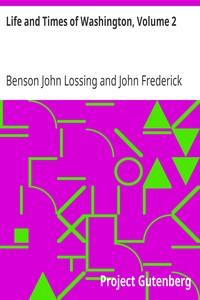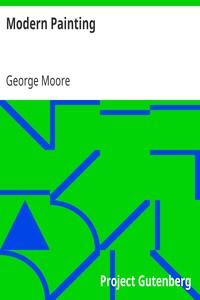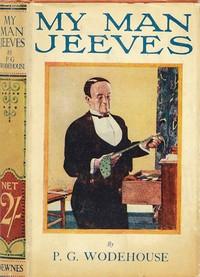Read this ebook for free! No credit card needed, absolutely nothing to pay.
Words: 78473 in 11 pages
This is an ebook sharing website. You can read the uploaded ebooks for free here. No credit cards needed, nothing to pay. If you want to own a digital copy of the ebook, or want to read offline with your favorite ebook-reader, then you can choose to buy and download the ebook.
WHISTLER CHAVANNES, MILLET, AND MANET THE FAILURE OF THE NINETEENTH CENTURY ARTISTIC EDUCATION IN FRANCE AND ENGLAND INGRES AND COROT MONET, SISLEY, PISSARO, AND THE DECADENCE OUR ACADEMICIANS THE ORGANISATION OF ART ART AND SCIENCE ROYALTY IN ART ART PATRONS PICTURE DEALERS MR. BURNE-JONES AND THE ACADEMY THE ALDERMAN IN ART RELIGIOSITY IN ART THE CAMERA IN ART THE NEW ENGLISH ART CLUB A GREAT ARTIST NATIONALITY IN ART SEX IN ART MR. STEER'S EXHIBITION CLAUDE MONET NOTES-- MR. MARK FISHER A PORTRAIT BY MR. SARGENT AN ORCHID BY MR. JAMES THE WHISTLER ALBUM INGRES SOME JAPANESE PRINTS NEW ART CRITICISM LONG AGO IN ITALY
WHISTLER.
I have studied Mr. Whistler and thought about him this many a year. His character was for a long time incomprehensible to me; it contained elements apparently so antagonistic, so mutually destructive, that I had to confess my inability to bring him within any imaginable psychological laws, and classed him as one of the enigmas of life. But Nature is never illogical; she only seems so, because our sight is not sufficient to see into her intentions; and with study my psychological difficulties dwindled, and now the man stands before me exquisitely understood, a perfect piece of logic. All that seemed discordant and discrepant in his nature has now become harmonious and inevitable; the strangest and most erratic actions of his life now seem natural and consequential contradictions are reconciled, and looking at the man I see the pictures, and looking at the pictures I see the man.
The "Ten o'clock" contained a good deal of brilliant writing, sparkling and audacious epigram, but amid all its glitter and "go" there are statements which, coming from Mr. Whistler, are as astonishing as a denial of the rotundity of the earth would be in a pamphlet bearing the name of Professor Huxley. Mr. Whistler is only serious in his art--a grave fault according to academicians, who are serious in everything except their "art". A very boyish utterance is the statement that such a thing as an artistic period has never been known.
One rubbed one's eyes; one said, Is this a joke, and, if so, where is the point of it? And then, as if not content with so much mystification, Mr. Whistler assured his ten o'clock audience that there was no such thing as nationality in art, and that you might as well speak of English mathematics as of English art. We do not stop to inquire if such answers contain one grain of truth; we know they do not--we stop to consider them because we know that the criticism of a creative artist never amounts to more than an ingenious defence of his own work--an ingenious exaltation of a weakness into a conspicuous merit.
Mr. Whistler has shared his life equally between America, France, and England. He is the one solitary example of cosmopolitanism in art, for there is nothing in his pictures to show that they come from the north, the south, the east, or the west. They are compounds of all that is great in Eastern and Western culture. Conscious of this, and fearing that it might be used as an argument against his art, Mr. Whistler threw over the entire history, not only of art, but of the world; and declared boldly that art was, like science, not national, but essentially cosmopolitan; and then, becoming aware of the anomaly of his genius in his generation, Mr. Whistler undertook to explain away the anomaly by ignoring the fifth century B.C. in Athens, the fifteenth century in Italy, and the seventeenth in Holland, and humbly submitting that artists never appeared in numbers like swallows, but singly like aerolites. Now our task is not to disprove these statements, but to work out the relationship between the author of the "Butterfly Letters" and the painter of the portrait of "The Mother", "Lady Archibald Campbell", "Miss Alexander", and the other forty-one masterpieces that were on exhibition in the Goupil galleries.
And so the contemplation of Mr. Whistler, the author of the "Butterfly Letters", the defender of his little jokes against the plagiarising tongue, should stimulate rather than interrupt our prostrations. I said that Nature had dowered Mr. Whistler with every gift except that of physical strength. If Mr. Whistler had the bull-like health of Michael Angelo, Rubens, and Hals, the Letters would never have been written. They were the safety-valve by which his strained nerves found relief from the intolerable tension of the masterpiece. He has not the bodily strength to pass from masterpiece to masterpiece, as did the great ones of old time. In the completed picture slight traces of his agony remain. But painting is the most indiscreet of all the arts, and here and there an omission or a feeble indication reveal the painter to us in moments of exasperated impotence. To understand Mr. Whistler's art you must understand his body. I do not mean that Mr. Whistler has suffered from bad health--his health has always been excellent; all great artists have excellent health, but his constitution is more nervous than robust. He is even a strong man, but he is lacking in weight. Were he six inches taller, and his bulk proportionately increased, his art would be different. Instead of having painted a dozen portraits, every one--even the mother and Miss Alexander, which I personally take to be the two best--a little febrile in its extreme beauty, whilst some, masterpieces though they be, are clearly touched with weakness, and marked with hysteria--Mr. Whistler would have painted a hundred portraits, as strong, as vigorous, as decisive, and as easily accomplished as any by Velasquez or Hals. But if Nature had willed him so, I do not think we should have had the Nocturnes, which are clearly the outcome of a highly-strung, bloodless nature whetted on the whetstone of its own weakness to an exasperated sense of volatile colour and evanescent light. It is hardly possible to doubt that this is so when we look on these canvases, where, in all the stages of her repose, the night dozes and dreams upon our river--a creole in Nocturne 34, upon whose trembling eyelids the lustral moon is shining; a quadroon in Nocturne 17, who turns herself out of the light anhungered and set upon some feast of dark slumber. And for the sake of these gem-like pictures, whose blue serenities are comparable to the white perfections of Athenian marbles, we should have done well to yield a littlestrength in portraiture, if the distribution of Mr. Whistler's genius had been left in our hands. So Nature has done her work well, and we have no cause to regret the few pounds of flesh that she withheld. A few pounds more of flesh and muscle, and we should have had another Velasquez; but Nature shrinks from repetition, and at the last moment she said, "The world has had Velasquez, another would be superfluous: let there be Jimmy Whistler."
In the Nocturnes Mr. Whistler stands alone, withouta rival. In portraits he is at his best when they are near to his Nocturnes in intention, when the theme lends itself to an imaginative and decorative treatment; for instance, as in the mother or Miss Alexander. Mr. Whistler is at his worst when he is frankly realistic. I have seen pictures by Mr. Henry Moore that I like better than "The Blue Wave". Nor does Mr. Whistler seem to me to reach his highest level in any one of the three portraits--Lady Archibald Campbell, Miss Rose Corder, and "the lady in the fur jacket". I know that Mr. Walter Sickert considers the portrait of Lady Archibald Campbell to be Mr. Whistler's finest portrait. I submit, however, that the attitude is theatrical and not very explicit. It is a movement that has not been frankly observed, nor is it a movement that has been frankly imagined. It has none of the artless elegance of Nature; it is full of studio combinations; and yet it is not a frankly decorative arrangement, as the portrait of the mother or Miss Alexander. When Hals painted his Burgomasters, he was careful to place them in definite and comprehensible surroundings. He never left us in doubt either as to the time or the place; and the same obligations of time and place, which Hals never shirked, seem to me to rest on the painter, if he elects to paint his sitter in any attitude except one of conventional repose.
Compared with later work, the execution is "tighter", if I may be permitted an expression which will be understood in studios; we are very far indeed from the admirable looseness of handling which is the charm of the portrait of Miss Rose Corder. There every object is born unconsciously beneath the passing of the brush. If not less certain, the touch in the portrait of the mother is less prompt; but the painter's vision is more sincere and more intense. And to those who object to the artificiality of the arrangement, I reply that if the old lady is sitting in a room artificially arranged, Lady Archibald Campbell may be said to be walking through incomprehensible space. But what really decides me to place this portrait above the others is the fact that while painting his mother's portrait he was unquestionably absorbed in his model; and absorption in the model is perhaps the first quality in portrait-painting.
Still, for my own personal pleasure, to satisfy the innermost cravings of my own soul, I would choose to live with the portrait of Miss Alexander. Truly, this picture seems to me the most beautiful in the world. I know very well that it has not the profound beauty of the Infantes by Velasquez in the Louvre; but for pure magic of inspiration, is it not more delightful? Just as Shelley's "Sensitive Plant" thrills the innermost sense like no other poem in the language, the portrait of Miss Alexander enchants with the harmony of colour, with the melody of composition.
Strangely original, a rare and unique thing, is this picture, yet we know whence it came, and may easily appreciate the influences that brought it into being. Exquisite and happy combination of the art of an entire nation and the genius of one man-the soul of Japan incarnate in the body of the immortal Spaniard. It was Japan that counselled the strange grace of the silhouette, and it was that country, too, that inspired in a dim, far-off way those subtly sweet and magical passages from grey to green, from green again to changing evanescent grey. But a higher intelligence massed and impelled those chords of green and grey than ever manifested itself in Japanese fan or screen; the means are simpler, the effect is greater, and by the side of this picture the best Japanese work seems only facile superficial improvisation. In the picture itself there is really little of Japan. The painter merely understood all that Japan might teach. He went to the very root, appropriating only the innermost essence of its art. We Westerns had thought it sufficient to copy Nature, but the Japanese knew it was better to observe Nature. The whole art of Japan is selection, and Japan taught Mr. Whistler, or impressed upon Mr. Whistler, the imperative necessity of selection. No Western artist of the present or of past time--no, not Velasquez himself--ever selected from the model so tenderly as Mr. Whistler; Japan taught him to consider Nature as a storehouse whence the artist may pick and choose, combining the fragments of his choice into an exquisite whole. Sir John Millais' art is the opposite; there we find no selection; the model is copied--and sometimes only with sufficient technical skill.
But this picture is throughout a selection from the model; nowhere has anything been copied brutally, yet the reality of the girl is not sacrificed.
Free books android app tbrJar TBR JAR Read Free books online gutenberg
More posts by @FreeBooks


: Life and Times of Washington Volume 2 Revised Enlarged and Enriched by Lossing Benson John Schroeder John Frederick - Presidents United States Biography; Washington George 1732-1799








